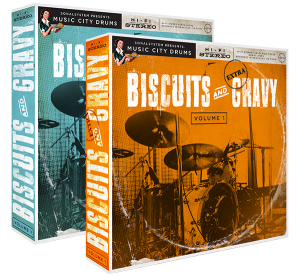Author Archives: Ryan Roullard
Time to Get Reel—Softube Tape for Studio One now Available
 Time to get reel! Tape is now available at shop.presonus.com
Time to get reel! Tape is now available at shop.presonus.com
Softube’s Tape plug-in adds cohesion and weight to your mixes. But Tape goes far beyond your average tape machine emulation. It includes three distinctly different tape machine types, and it offers the ease of use and low CPU strain that today’s music creators rightfully expect.
Even in this day and age, it’s common practice for computer-based professional studios to run their mixes through at least one generation of analog tape. Why? Because even when used subtly, analog tape has a smoothing effect and adds cohesion and weight to a mix—it takes the recording from a collection of individual tracks into a song where everything is connected and works together. With Softube’s Tape plug-in, you can have all that and more.
Three Machines in One
Tape includes three different tape machine types in one plug-in. Type A is based on a classic Swiss high-end reel-to-reel machine, known and loved for its precision and linearity. Type B is much more colorful—it’s a transformer based machine which adds extra weight and cream to the low end. Lastly, Type C is based on a British tape machine with a distinct vintage vibe.
Ease of Use
Select your favorite tape machine Type, and adjust the Amount knob to taste. In most cases, that’s all you need to do to soak your tracks in analog tape sweetness. Easier still, load up one of the included presets, made by award winning engineers such as Joe Chiccarelli (Beck, U2, Strokes) and Howard Willing (Smashing Pumpkins, Sheryl Crow, Kris Kristofferson).
But Wait, There’s More
Feeling tweaky? Why not start by trying the different tape speed settings—you’ll find that the slower the tape speed, the more pronounced is the so-called tape head bump, which adds low end to the mix. Or open the Remote Control panel where you can control the selected tape machine’s speed stability, crosstalk amount and several other tape-a-licious features.
Dense Sound, Light on CPU
Add a single instance of Tape on your master bus to emulate what most computer based studios do today—mix in the computer, then mix down to a stereo tape machine—or go vintage style by adding Tape to every single track in your mix. Yes, your computer will be able to handle it. As most Softube plug-ins, Tape is uniquely light on your computer’s processor.
Extras for Studio One Users
If you run PreSonus Studio One, you can not only use Tape as a standard plug-in—Adding Tape to your MixFX slot gives you Tape Multitrack. Tape Multitrack includes all the goodies of Tape, but in addition, you get selectable crosstalk between each individual track—and you can easily control the Tape Multitrack settings from a single interface. The Tape and Tape Multitrack license is one and the same. This means that if you’re not a Studio One user but at some future point decide to switch to it, you will already have Tape Multitrack installed, licensed and ready to go.
In Short
- Realistic analog tape sound
- Three tape machine types included
- Easy to use
- Low CPU usage
- Includes Tape Multitrack which can be used in the MixFX slot of Presonus Studio One—adding individual channel crosstalk and single interface control of all tracks
Click here to get Tape from shop.presonus.com!
Nikola Jeremic on Composing for Starpoint Gemini Warlords in Studio One
[Nikola Jeremic is a longtime PreSonus user, fan, and all-around good friend to the company. He’s written outstanding blog pieces for us in the past, and this is no exception! Today he sheds some light on the oft-misunderstood process of music and audio for computer games, in particular, the just-released science fiction epic “Starpoint Gemini Warlords.”]
How is doing music for games different than doing music for film or TV? What features in Studio One make it particularly well-suited for this application? 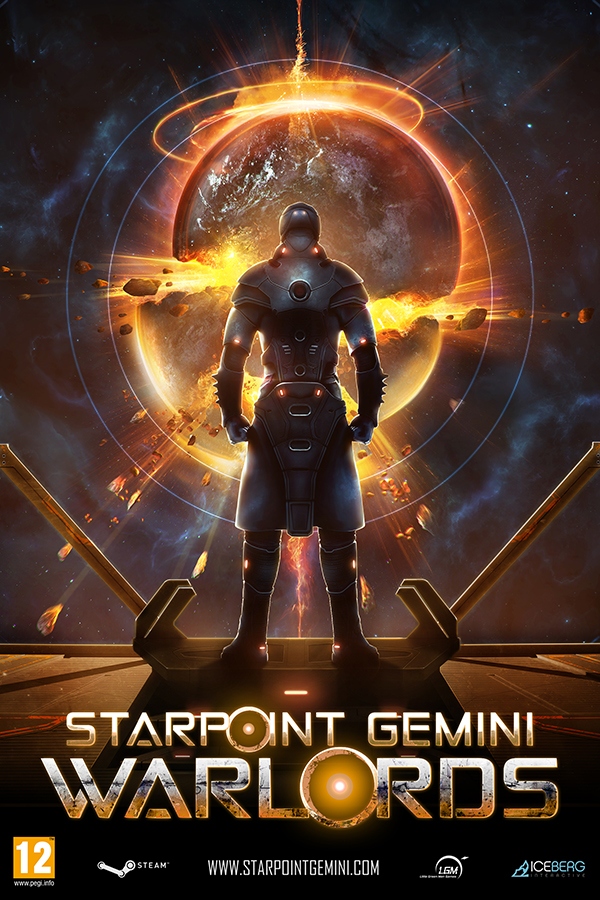
Doing music for games is technically a completely different process than composing for film or TV, because the music in video games is non-linear and interactive, unlike on films and TV. When you compose a cue for film or TV series, you are limited to the timeline of that particular scene, and you have to sync everything to fit in that particular timeline. In the game, the music needs to follow the decisions of the player and fit itself to the various situations the players will get into. That is why I compose a cue for a game in segments. In other words, I create a piece of music that can be divided into looped 8-16 bars parts that can be interchanged inside the audio middleware and each cue has a short ending stinger that can be triggered at any point to end the music cue. This idea is best applied to big action sequences and boss fights. When it comes to ambient atmospheric music, it’s fairly similar, but sometimes it’s not needed to be looped, and you can just transition from one ambient track to another, because I usually compose them in the same key, or I at least make them start and end on the same note for easier transition. That’s the approach I used for Starpoint Gemini Warlords for example.
You’ve been using Studio One for a long time. What are some of the more recent features that you found yourself using during the scoring of Starpoint Gemini Warlords?
Scratch Pads are hands down THE BEST idea ever! I love having the option of being free to experiment and change the arrangement of a cue in a single project that’s opened. It is very useful when I want to create different versions of one track to test how it sounds in different variations. I also love the fact that no matter how many scratch pads you have opened, everything is mixed in the same mix window, so I can bounce different versions very easily and quickly send them off to the developer for listening. I have to say that Studio One Mixer is absolutely the finest and probably the most respected mixing engine out there today. I have a lot of DAWs that I use for composing when collaborating with other people on projects, but I ALWAYS mix my tracks in Studio One. Project page is also awesome, especially when I need to deliver a big amount of mastered tracks to a client and I need to make sure they all sound the same and have the same levels. It’s just amazing, and the fact that I can quickly take care of meta-tags and add album art cover is really cool. The official soundtrack for Starpoint Gemini Warlords is being prepared in Project page, and it makes my life a whole lot easier. I also love the fact that it has all the needed metering in a single window, so I don’t have to load other plugins and use up my CPU. Bouncing in place and converting tracks in project pool is also a feature I use a lot. Creating FX chains with various plugins has made my mixing and sound designing process lightspeed faster, because I can always recall a preset I have created and use it over and over again no matter what plugins I have in the chain. Mojito is still my favorite go-to synth for bass lines. I generally love the sleek and clean look of Studio One interface and its plugins, because it makes my job a lost faster and easier to do without the need to think about “ooh what does this button do?” or spend a lot of time in sub-menus to find the option I need.
Do you use the Notion integration?
Yes I do. Not always, but I most of the time when I am working on piano and orchestral pieces, I always check my score sheet with Notion. What I’d love to see in the future is having Notion editor as an actual part of Studio One Pro. For example, when you open up a midi editor, you can also switch to Notion editor in the same window and tweak the notes on the staff.
Does your score consist of recordings of live instruments or are you using virtual instruments exclusively? If so, which ones?
The score for Starpoint Gemini Warlords consists of both virtual and live instruments. All of the guitar and bass parts are recorded via my FireStudio Project interface, and I also recorded my external hardware synths through FireStudio. This is mostly synth-oriented soundtrack that pays the homage to some of our favorite games and sci-fi franchises. My main synths here were my hardware synths Yamaha DX7 and KORG Volca Bass and Volca Keys, and all of them were processed through my guitar pedals, but regarding the software synths, I used Arturia V collection (mostly MiniMoog V, CS-80 V, ARP 2600 V, and Modular V) and U-He Zebra 2. I also used Mojito for basses and Mai Tai for some pad and drone sounds that were later processed via different FX plugins.
As Starpoint Gemini Warlords is clearly a Space Opera of sorts, do you take any inspiration from John Williams’ use of leitmotif in Star Wars? Any other musical influences you’d care to talk about?
What I love about Little Green Men studio (the developers of the game) is that it’s a group of fanboys and fangirls and it was a lot of fun at brainstorming meetings regarding the soundtrack for the game. Everybody was into sci-fi music and everyone has their own favorite franchises, so I had to do a lot of research and take a listen of various sci-fi game and film soundtracks. There were no traditional leitmotifs for characters, instead we decided to represent each sector in the game with a different melodic theme based on what usually goes down there, so for example more friendly sectors have some light evocative music, alien sectors are more mysterious and feature elven type of vocals and exotic woodwind instruments, while pirate and outlaw sectors are very dark and aggressive in sounds. The biggest inspiration came from video game soundtracks such as Homeworld, EvE Online (I’d love to score that one in the future), Mass Effect, Deus Ex The Human Revolution, and Battlestar Galactica TV series.
Any advice to share for musicians and producers who want to get into game audio or music but don’t know where to start? 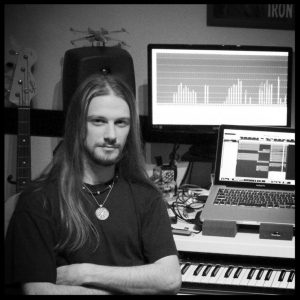
First thing I suggest you do is to join audio societies such as AES (Audio Engineering Society), G.A.N.G. (Game Audio Network Guild), and visit conferences such as GDC (Game Developers Conference) and GamesoundCon. You will meet a lot of people from the industry, and they will all be more than happy to share knowledge and forward you to other people as well. Read books on game audio from publishers like Focal Press for example, I know that helped me a lot. You can always look for some smaller mobile gaming developers out there in your local communities and get in touch with them as well. And the most important thing of all is to learn your craft and learn it good. Don’t get overwhelmed by this or that plugin that’s newest on the market or whatever. Get a set of tools that you like and learn them well inside and out. You will be amazed by how easily you can get great results with bundled plugins that come with your DAW. I still use my Studio One Pro EQ and Compressor most of the time for sampled stuff. Create your own sounds from the stuff that you have. A developer will always learn to appreciate more the fact that you took your sweet time to create something original that’s only for them, than sending them something created with commercial instruments libraries that everyone uses.
Links:
Studio One 3.5 – What’s New and Release Notes
Studio One 3.5 is here! This is a free update for owners of Studio One 3.x. Click “Check for updates” in Studio One’s start page to get it!
Full release notes follow. For a less-technical overview, check out the video below or visit our What’s New page here.
IMPORTANT: This version introduces an updated file format for Songs and Projects for faster
Save / Auto-Save. Files created in 3.5 will no longer open in previous versions of Studio One.
Make sure to work from copies of your existing songs created in Studio One 3.3.4 or older if
you like to continue working with a previous version as well.
______________________________
New features and improvements:
Audio Engine and Performance
Flexible Dropout Protection
• Native Low Latency Monitoring
• Low-latency virtual instrument monitoring
• Multi-processing enhancements for improved CPU balancing
Arrangement and Automation
New shortcut to “Select all Muted Events”
• Copy/Paste Events also copies Layer data
• Import tempo map, time signatures and markers when dragging MIDI file to
Arrangement [Cmd+Alt]
• Maximum Track Delay increased to 1,000ms
• New Track command: “Apply Track Names to Channels”
• “Cursor follows Edit Position” now limited to manually selected events or
ranges
• Batch renaming events always adds leading zero
• Event Inspector: Multi-editing for Event Start and End
• Arranger Track: Move Arranger Section only [Cmd+Alt]
• “Bounce to new Track” now preserves output routing
• Complete Show/Hide for Automation
• Automation Lanes on Instrument Track
• Improved time-stretching accuracy. “Audio Bend” mode now obsolete.
Mixer (Console)
• Mixer Undo
• Remote control of StudioLive Series III Fat Channel and mic pre-amps
• New command: “Remove Track Automation” removes all automation data
• Visual plug-in bypass state in console
Instruments and Plug-ins
Fat Channel XT
• Adjustable level range for Spectrum Meter (all modes)
• Updated micro-views for Spectrum Meter
• 12th octave mode in Spectrum Meter (incl. keyboard scale)
• Loudness Meter now EBU R-128 compliant
• [macOS] MIDI input for AU plug-ins
• Event FX window follows Event selection
• [macOS] Preset list support for AU instruments/plug-ins
• FX Routing: Splitter can now be moved freely
Music Editor
Unlimited number of controller lanes
• Option to “Resize adjacent Events” (multiple overlapping) [Alt]
Score Editing with Notion
• Send audio or note data to existing song
• Tempo map import (drag & drop)
• Other improvements within Notion (ReWire handling, Studio One application
launcher, and more)
Project Page
• Independent Track Markers
• Flexible Loudness Detection options
• New Loudness Meter
• New Spectrum Meter
• DDP import
• Improved meta-data editing
• Pool in Project Page
• New Bounce Track option
• Dynamic search for Songs in Project (improved compatibility)
• Faster rendering (if a Song is used multiple times)
• New command “Bounce Track” (includes Track inserts, not Master FX)
• Extended “Add to Project” menu
• Improved ID-tag export (adding Composer and ISRC)
• User interface improvements
• New “Split Track” and “Split at Cursor” commands + shortcuts
Browser
• New “Construction Kits” node in Loop Browser
• Search fields in Browser and Mixer reset on close
Hardware and Multitouch
• Dual-screen support (Raven MTi)
• Higher MIDI update rate for control surfaces
General
• Delete unsaved files and folders when closing new song w/o saving
• Warnings shown when errors occur while exporting mix in real-time
• Updated FLAC codec (better performance)
• Improved save and auto-save performance for Songs and Projects
• [macOS] Independent recording and playback devices
• Extended Bounce and Export options
• Support for 176.4 kHz sample rate in audio export
• [Developers] Gain Reduction API for VST2
—————————————————————————–
—————————————————————————–
The following issues have been fixed:
• “Invert Selection” didn’t restrict range when Scratch Pads exist
• Arranger Track section copy doesn’t work backwards on timeline
• Pre-recorded notes overlapping loop start are doubled after loop recording
• Fade handles are hard to reach when event volume is not at max.
• Overlapping audio events with fade-in are out of sync
• Crash when recording MIDI in loop
• Play Start Marker affects bounce between markers
• No “Paste” in context menu for Tempo Track
• [ARA] Events show wrong content when split after analysis with Melodyne 4.1
• Crash with NI Komplete Audio 6 when changing sample rate
• Audio time-stretch with bend markers is not exact
• Chorder: Crash when transposing out of range with automation
• Install from “Cloud” inside Studio One 3.3 hangs
• Plug-in menu search box loses focus
• Command for “Show in Finder/Explorer” not working for Macros
• Can’t drag more than one Instrument from Browser
• [macOS] Newly created folders not visible in Browser
• “Copy external files” not working for multiple opened songs
• [macOS] Studio One language changes after re-install
• Crash while closing all songs
• Musicloop exports without audio when routed to outputs other than Main
• Wrong-placed note events in loop recording
• Sustain pedal with latency writes wrong data
• Global plug-in bypass not functional if any plug-in in Chain is disabled
• Spectrum Meter curve has offset depending on FFT size
• Channel buttons missing on Multi-Instrument channels
• [macOS] AU Instruments saved in OFF status load back empty
• [macOS] Kontakt AU not showing all available outputs
• Global deactivate FX not working with disabled tracks
• Inconsistent behavior when chasing long notes
• [Impact] Wrong channel order when moving sub outs in mixer
• Wrong channel order after transform to audio and back
• Wrong channel order between folders and busses
• Wrong channel order when dragging instrument to track
• Studio One will not export note data to Notion if the file has an apostrophe in the name
• [macOS] Crash on start with OSX 10.11 El Capitan
• [macOS] AU presets always marked as edited
• |macOS] Invisible scroll bars in help window
• Offset when dragging audio file with bend-markers to Instrument Track
• Notes are transposed one octave when dragging to new Instrument Track via
Melodyne
PreSonus LIVE: Breaking Barriers airs May 23, 2017.
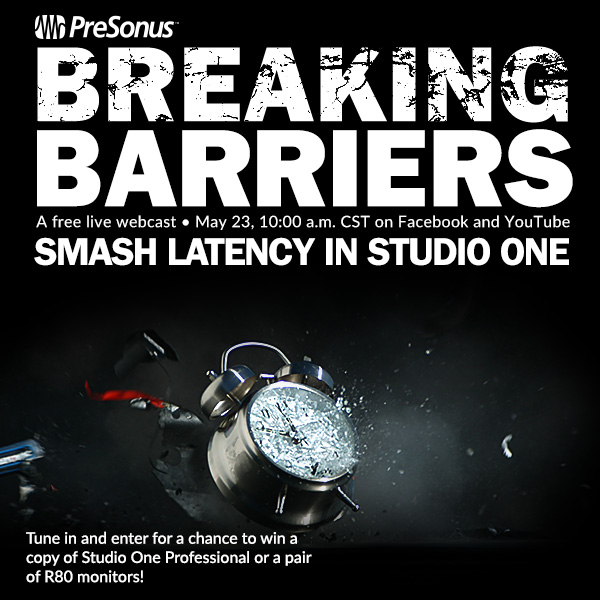 We’re gearing up for our next PreSonus LIVE!
We’re gearing up for our next PreSonus LIVE!
We’re going LIVE on Facebook and YouTube May 23 at 10 am CST! Get your questions ready for us! VP of Sales, Rick Naqvi and QA Head Honcho Dominic Bazile, will be hosting and taking your questions. This broadcast is all about speed–smashing latency into the ground and leaving it in the dust.
And we have a Studio One secret to share–don’t worry, Tuesday is only a few days away.
Of course there will be prizes. RAD PRIZES. Don’t miss out.
Follow us on Facebook and YouTube and turn on your notifications so you won’t miss the show!
Follow us on Facebook here!
Watch us on YouTube here!
Get Notion for iOS for nearly half price—limited time!
Click here to visit the App Store: http://apple.co/2oFiZoV
All this for nearly half price won’t last, so get it before May 12!
Compose on the go and transfer your work to Notion 6. New handwriting support for iPad. Works with notation, tablature, or both. Huge wealth of sounds available from the London Symphony Orchestra recorded at Abbey Road Studios.
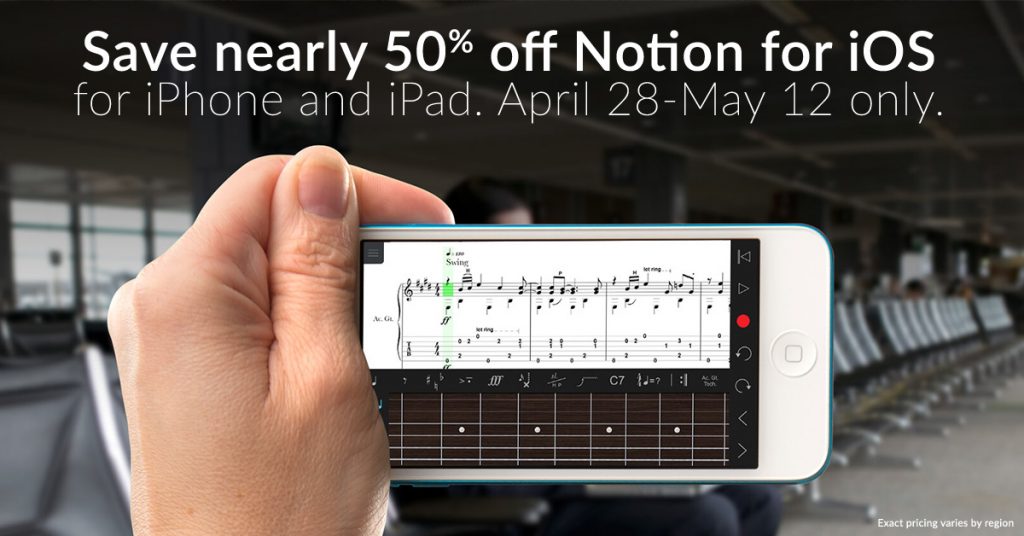
Introducing PreSonus Quantum—Our Fastest Interface Yet.
Every design decision during Quantum’s engineering was made with one goal in mind: speed. PreSonus Quantum sports high-speed Thunderbolt connectivity and a no-frills, direct-to-daw architecture, with no DSP. The result is our leanest, fastest, lowest-latency interface to date.
Click here for the full story.
Audiophile-grade digital converters, low-jitter clocking, and recallable preamps add up to a superior recording and listening experience. The Quantum operates at up to 192 kHz for ultra-high-definition mixing and recording. High-quality converters on every input and output provide 120 dB of dynamic range to capture complex musical harmonics smoothly and naturally with no audible distortion. And our recallable XMAX Class A analog microphone preamps deliver incredibly high headroom, deep lows, smooth highs, and a rich overall sound so you’ll hear every breath, transient, and detail in your recordings.
Cutting-edge 24-bit, 192 kHz converters with 120 dB of dynamic range and a surprising amount of expandability and software control options round out the package.
Five New Sample Packs from Sample Tekk Now Available for Studio One
Click here to browse and shop!
We’ve got five new amazing sample sets from Sample Tekk that we’ve just added to shop.presonus.com. These packs are compatible with Studio One Prime, Artist, and Professional (version 3.3.4 and higher).
The White Grand
Sample Tekk recorded The White Grand with the finest equipment available, using a specially-designed digital recording technique to give you unequaled performance and sound. Prepare to explore a tactile and expressive feast, not heard in many sampled pianos today.
INIL Choir
Get the crazy ethereal choir sounds of “I’m Not In Love” by 10CC with INIL Choir! These choirs are unique—the combination of voices and the way they were produced have given them a sound that’s truly one of a kind. Now, SampleTekk, in cooperation with Eric Stewart of 10CC are very proud to release of The INIL Choir, thus taking one of the most famous analog samples into the digital era.
Tubed Keys
Great-sounding Rhodes for Studio One, recorded through a Fender Twin as the Rhodes was intended to be heard. Sample Tekk didn’t go for 80s sheen and gloss with lots of tines and overtones. The Tubed Rhodes is more representative the 70’s: a gritty, hard-core rythm’n’blues kind of sound.
The Rain Piano
Somber sounds of a piano that has been left out in the rain and elements. Musical, but with extra overtones and character. The Rain Piano has become a kind of a synonym for character pianos. It has been used and is still used on countless productions where you want something that adds a different flavor rather than using a normal piano.
Singularis
Old School piano recorded with vintage mics, tape, and preamps. In glorious MONO!
Click here to browse and shop!
Revoice Pro 3.3 Now Available for Studio One
Get Revoice Pro 3.3 – Vocal Tuning, Time Correction and ADR With Advanced Studio One Integration.
“Super-Natural Vocal Production” With Advanced Studio One Integration
Click here to buy!
If you need to improve the pitch or tightness of your vocal or instrument tracks in Studio One, Revoice Pro will save you heaps of time. Revoice Pro is the ONLY software that offers manual and automatic pitch and time modification with unbeatable, natural quality. Its unique tools include alignment, double track creation, and simple, artifact-free manual warping.
You can adjust the tuning, timing, and sibilants of a lead vocal, tighten or create backing vocals, rap or instrument doubles, and high-quality harmonies. What’s more, Revoice Pro 3.3 now supports advanced Studio One 3.3.4 integration and includes a Quick APT, Doubler and Warp workflow.
Time-saving vocal tuning, time correction, and ADR.
Revoice Pro is used worldwide by top audio professionals for the fastest, easiest and best-sounding adjustment and alignment of vocals, instruments, and ADR as well as double track generation. Revoice Pro 3 adds a powerful set of easy to use tools and workflow enhancements for Studio One. Major new features include a simple yet powerful toolset for manually adjusting audio timing and pitch. What’s more, users say that Revoice Pro 3 provides the most natural and transparent-sounding processing available.
At the heart of Revoice Pro is the unique Audio Performance Transfer (APT) process, that can gives the user the ability to take the timing, pitch, vibrato and level features of one audio track and use it on another, giving you the chance to match or correct timing and tuning, plus our highly-praised realistic Doubler process sounds great and is easy to use.
You can choose to work fast with automatic workflows or use the unique manual Warp process for pitch and timing. Now you have a one-stop, time-saving, high-quality solution for creative and corrective audio manipulation tasks.
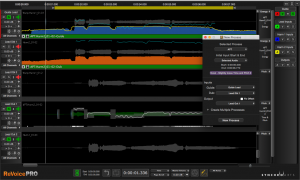
What the Pros are Saying
“Revoice Pro let me tune a wildly out demo lead vocal (with a great vibe) and then match an equally out of tune double to this fixed lead instantly. It then was very simple to repeat and adapt this process with more background vocals AND also generate additional doubles! UNREAL!!! Worked great!!”
Emre Ramazanoglu – Producer, Engineer and Mixer (Shakira, Afrika Bambaata, Prodigy, Sia, Mark Ronson, Pulp, Jack Savoretti and Warpaint)
“We use Revoice Pro to align all the doubles and background vocals to a lead vocal which we’ve already spent quite a bit of time comping and tuning. But not only does Revoice Pro align doubles to a guide track, it also matches the pitch.”
John Hill – Producer, Songwriter, Remixer and Musician: Eminem, Florence and The Machine, Rhianna, SIA, Banks, Tune-Yards, MIA and Charli XCX
“Revoice Pro 3 saves an obscene amount of time. I find it an incredibly musical plug-in because it allows me to make stuff tight and in tune with the guide audio, but still have variance. So I end up with backing and lead vocals that I can really push forward in a mix. Killer to my ears.”
Francesco Cameli – Engineer: Queen, Genesis, Eric Clapton, Mariah Carey, Muse and Adele
“I like the speed of use with the APT AudioSuite feature. It allows me to quickly tune and time vocal stacks so that I can focus more on the music and mix instead of getting caught up with tedious tuning and timing processes. Revoice Pro 3 has become an essential tool in my digital toolbox. I highly recommend it!”
Ryan Nasci– Producer/Engineer: Tony Maserati, Jon Castelli, Isa “Machine” Summers (Florence And The Machine, Judith Hill and LP) and Tyler Johnson (Taylor Swift, Ed Sheeran, Mikky Ekko and Cam)
“Revoice Pro will save you high levels of frustration and even more man-hours when working on a project. Its workflow is much faster, and more accurate than anything before, allowing you to choose precisely how tight you align audio with very impressive sonic results. It has saved countless sessions since I’ve started using it.”
Dylan “3-D” Dresdow – Mix engineer (Black Eyed Peas, Michael Jackson, Usher)
BIAS Delay Giveaway @PositiveGrid
Guitar Solos Need Delay
- 1st Prize: 1 Studio One Professional Edition – 1 BIAS FX Pro – 1 BIAS Pedal Delay for Mac/PC
- 2nd Prize: 1 BIAS FX Pro – 1 BIAS Pedal Delay for Mac/PC
- 3rd Prize: 1 BIAS Pedal Delay for Mac/PC
Biscuits and Gravy Drum Loops now Available for Studio One, Extra Gravy also Available
Click here to check them out at shop.presonus.com
Meticulously recorded, delicately produced, and packed full of flavor in Nashville, Tennessee, these audio loops were specifically recorded with both character and attitude set to inspire and move you without the limitation of genres. Inside you’ll find a variety of grooves with that punch and feel you’ve been looking for.
Music City Drums Vol. 1 “Biscuits and Gravy” is available in 2 forms:
1. Biscuits and Gravy
- 24/441 stereo audioloops
- over 450 production ready audio loops
- tempo variations from 70 BPM to 130 BPM
- 5 different kits recorded
2. Biscuits and Extra Gravy
- 24/441 stereo and multitrack audioloops
- over 3,600 production ready audio loops
- tempo variations from 70 BPM to 130 BPM
- 5 different kits recorded
